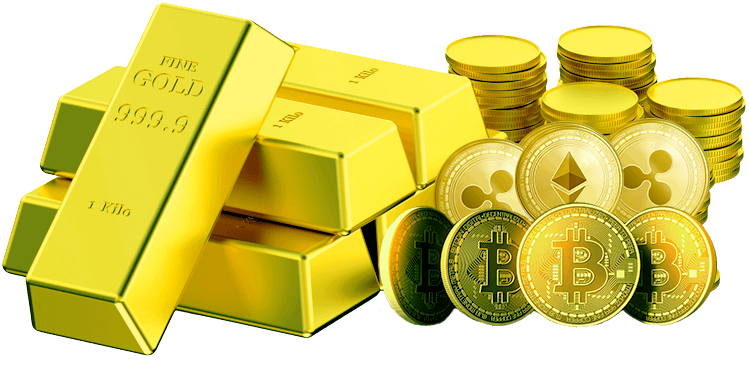The Risks of Gold ETFs
Many people are interested in investing in Gold ETF’s instead of physical gold, because it is easier to do than physically picking up gold. With physical gold you need to pick it up or order it, and store it safely, and when you want to sell it you need to transport it again. Gold ETF’s do provide a good proxy for physical gold investment. Because the price of golf in an ETF is 100% correlated to the price of physical gold, it is therefore subject to the same dangers as bullion. There are also some risks that are unique to the ETF that is not present with physical gold.
What is Good about the Gold ETF
Up to this point, gold ETFs have grown quickly and amazingly in a good environment for them, and it has been a lengthy and very bullish market for all ETFs including gold.
In October of 2007, gold had gone way up from its low of around $250 in 2001. The real test is how it would do in a bad market. So far, as we’ve discussed above, gold ETFs have done well with market corrections in a bull market. There were some price declines in gold ETF inventories, but they were quite small in percentage terms. It remains to be seen whether ETF investors will hold on to their investments in an extended gold bear market.
The Risks of any Gold Investment
The most significant gold price risk, which is therefore a gold ETF risk, is just a general recession and a decline in all classes of assets. However, statistics have generally shown that gold doesn’t fall with other asset classes. But, it’s also true that the price of gold has gone down during market downturns. There is one more risk to gold ETFs, and that is that gold is very liquid, and if hedge funds and speculators have to dump overvalued metals and other commodities, in order to bring in cash for margin calls, they may sell gold, specifically bullion. Gold is very liquid, and it’s sometimes easier to unload than other overvalued metals. When prices have dropped in the past, this has happened.
In 3q 2007, several banks pumped hundreds of billions into financial markets that were illiquid in nature. All this pumping caused the price of gold to rise. Central banks gave loans to at-risk banks, and they helped lessen the concerns of counterparty banks by doing so. It was only the first step, though. The problems under the surface were still extremely serious. The second step is how central banks and investors handle parallel crises. The first is connected to too many loans on residential real estate and the increase in defaults. Along with this problem is the problem of overextended banks and the worldwide hedge fund industry. The problem of thousands of hedge funds borrowing increases their exposure to $4 trillion. Some have noted that banks have been taking back credit and some investors have taken out of money.
Economists and analysts have posited that irresponsible lending and the undoing of hedge funds’ leveraged positions are one of the main causes of the 2007 credit crisis. It was the worst failure since what happened with Long Term Capital Management in 1998. There could still be a lot of volatility and problems in the next couple years. It’s no surprise that a lot of investors have bought a lot of ETFs, because gold is an intelligent purchase when there is a lot of market uncertainty. However, a lot of it depends on the price of gold and the chance of a steep decline in jewelry and other demand. There are still risks of a precious metals and commodities bubble.
The Unique Risk of ETFs
To understand how a Gold ETF is uniquely risky compared to gold, you have to understand why many people hold gold. People hold gold because they want a hedge against inflation, turbulence in other asset classes, and some people want to possess gold because they want a form of currency that will work in the case of a collapse of our economic system. Here are two ways that a gold ETF poses a unique risk from physical gold.
The ETF Doesn’t Have the Gold
The ETF could collapse if it was found to not actually hold enough of the gold to support the market cap of the fund. If the ETF was committing fraud, or an organization that they were dealing with was, some potential exists in the system for the fund being unable to come up with the gold.
Most of the time, these funds never take physical delivery of the gold but instead buy financial instruments which mimic the price of gold. This poses a significant risk to someone when compared to taking physical delivery of your own gold.
Collapse in the Financial System
Because the ETF is part of the stock market and financial system as a whole, during a disturbance of collapse of the system a customer may be unable to extract their value. This sort of defeats the purpose of holding gold as an investment. If you have your own gold, you can be mobile with it, and exchange it as you see fit.
Similarly, a financial algorithm run amok could cause a collapse in the price of a ETF, when in reality the value of the underlying gold assets is much higher. While this represents a buying opportunity for opportunists, if you have a “stop loss” or are selling at the wrong instant, you may lose a lot of money unnecessarily.
Does Owning a Gold ETF Pose a Risk?
When things are running smoothly owning a gold ETF is just as good as owning the physical gold. The problem is that part of the appeal of hedging your finances with gold is that it has value if the rest of the system is falling apart. Only you can decide if a gold ETF is right for you, but we prefer physical gold for our clients.



